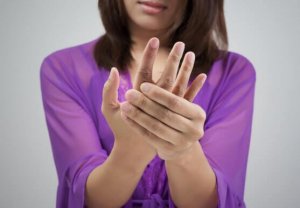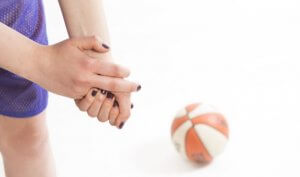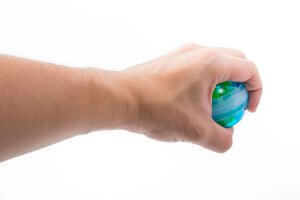The Best Gyroball Exercises For Your Fingers

The gyroball is useful for the recovery process of people who have suffered an injury in their upper extremities, and you can also include it in your gym routine; in fact, more and more people are starting to use it every day.
In this article, we’ll tell you about the best gyro ball exercises for your fingers. This is perfect if you spend hours using a keyboard or a computer mouse.
The gyroball and injury recovery
The gyroball is a sphere that doctors use for injury recovery treatments because it boosts and strengthens the muscles. At first sight, it looks like a common ball, but when you look carefully, you’ll see it has a gyroscope inside.
What is it for? Based on the principle of centripetal force, it makes you use more strength than a simple ball would provide. Depending on the speed at which you make it rotate, the gyroball will offer some resistance and help you in your recovery.
The best part is that you don’t need electricity or batteries to use it: you can activate it by pulling a rope inside the ball and continue with the speed you choose. There’s even the latest model called “autostart” that turns on with the impulse of your fingers.
What is it used for?
The gyroball is mainly used to treat injuries, pain, and problems in the shoulders, elbows, wrists, and fingers, as it reduces inflammation and pain. It works by strengthening the damaged muscle and, at the same time, working other nearby areas.
At the same time, this sphere allows you to increase the coordination and flexibility of your muscles. This is why you can also use it at the gym or with your training routines at home.
It’s recommended not only in the case of injuries, tendonitis or accidents but also as a preventive treatment for typical ailments such as the famous carpal tunnel syndrome, tennis elbow (epicondylitis) or golfer’s elbow (epitrochlearis).

If you practice sports where your arms make a lot of effort, such as tennis, paddle tennis, climbing, windsurfing or motorcycling, the gyroball can help you strengthen the muscles and joints that are more likely to suffer injuries. The most common areas at risk are shoulders, elbows, and wrists.
Gyroball finger exercises
Beyond what we’ve talked about, it’s not necessary to be an elite athlete to enjoy the benefits of the gyroball.
Many people use it during their work day, especially if they spend hours typing with a keyboard or using a computer mouse. It can even be useful if you use social networks frequently and are constantly holding your phone in your hands.
The following gyroball finger exercises are beneficial for anyone. Therefore, don’t doubt practicing them before suffering injuries or as a treatment for more specific problems.
1. Fingertips
You can start with a simple but very effective exercise. Take the ball with your (right-hand) fingers. Loosen your arm and keep your back and head straight.
Make quick circular movements with the ball so that it offers resistance. You’ll strengthen not only your fingers but also your wrist. Do this for 30 seconds and then change hands.
2. Two fingers
In this case, you’ll have to hold the gyroball with your thumb and index finger; leave the other three fingers stretched out. Flex your elbow slightly and point the palm of your hand to the front. Spin the ball faster and faster as the gyroscope accelerates.
Complete 30 seconds before repeating with the other hand.

3. Up and down
This is one of the gyroball exercises that also works your shoulders, forearms, and elbows. Sit comfortably and hold the ball with your whole hand, as if you were wrapping it. Rest your forearm on your knee and put your hand in the air.
Once you’re in this position, make quick up and down movements, as if you were mixing a pot of paint or shaking a yogurt. After 20 seconds, change hands.
As you may have noticed, all of these exercises are simple and take just a few minutes. However, the benefits in terms of prevention and rehabilitation are notable. Strengthen your muscles with the gyroball!
The gyroball is useful for the recovery process of people who have suffered an injury in their upper extremities, and you can also include it in your gym routine; in fact, more and more people are starting to use it every day.
In this article, we’ll tell you about the best gyro ball exercises for your fingers. This is perfect if you spend hours using a keyboard or a computer mouse.
The gyroball and injury recovery
The gyroball is a sphere that doctors use for injury recovery treatments because it boosts and strengthens the muscles. At first sight, it looks like a common ball, but when you look carefully, you’ll see it has a gyroscope inside.
What is it for? Based on the principle of centripetal force, it makes you use more strength than a simple ball would provide. Depending on the speed at which you make it rotate, the gyroball will offer some resistance and help you in your recovery.
The best part is that you don’t need electricity or batteries to use it: you can activate it by pulling a rope inside the ball and continue with the speed you choose. There’s even the latest model called “autostart” that turns on with the impulse of your fingers.
What is it used for?
The gyroball is mainly used to treat injuries, pain, and problems in the shoulders, elbows, wrists, and fingers, as it reduces inflammation and pain. It works by strengthening the damaged muscle and, at the same time, working other nearby areas.
At the same time, this sphere allows you to increase the coordination and flexibility of your muscles. This is why you can also use it at the gym or with your training routines at home.
It’s recommended not only in the case of injuries, tendonitis or accidents but also as a preventive treatment for typical ailments such as the famous carpal tunnel syndrome, tennis elbow (epicondylitis) or golfer’s elbow (epitrochlearis).

If you practice sports where your arms make a lot of effort, such as tennis, paddle tennis, climbing, windsurfing or motorcycling, the gyroball can help you strengthen the muscles and joints that are more likely to suffer injuries. The most common areas at risk are shoulders, elbows, and wrists.
Gyroball finger exercises
Beyond what we’ve talked about, it’s not necessary to be an elite athlete to enjoy the benefits of the gyroball.
Many people use it during their work day, especially if they spend hours typing with a keyboard or using a computer mouse. It can even be useful if you use social networks frequently and are constantly holding your phone in your hands.
The following gyroball finger exercises are beneficial for anyone. Therefore, don’t doubt practicing them before suffering injuries or as a treatment for more specific problems.
1. Fingertips
You can start with a simple but very effective exercise. Take the ball with your (right-hand) fingers. Loosen your arm and keep your back and head straight.
Make quick circular movements with the ball so that it offers resistance. You’ll strengthen not only your fingers but also your wrist. Do this for 30 seconds and then change hands.
2. Two fingers
In this case, you’ll have to hold the gyroball with your thumb and index finger; leave the other three fingers stretched out. Flex your elbow slightly and point the palm of your hand to the front. Spin the ball faster and faster as the gyroscope accelerates.
Complete 30 seconds before repeating with the other hand.

3. Up and down
This is one of the gyroball exercises that also works your shoulders, forearms, and elbows. Sit comfortably and hold the ball with your whole hand, as if you were wrapping it. Rest your forearm on your knee and put your hand in the air.
Once you’re in this position, make quick up and down movements, as if you were mixing a pot of paint or shaking a yogurt. After 20 seconds, change hands.
As you may have noticed, all of these exercises are simple and take just a few minutes. However, the benefits in terms of prevention and rehabilitation are notable. Strengthen your muscles with the gyroball!
All cited sources were thoroughly reviewed by our team to ensure their quality, reliability, currency, and validity. The bibliography of this article was considered reliable and of academic or scientific accuracy.
- Amo Usanos, C., Alonzo Fernández, J., Amo Usanos, I., Cantero Ayllón, M. J., & Puente Muñoz, A. I. (2000). Síndrome del túnel del carpo. DOLOR. https://doi.org/10.1016/S0211-5638(04)73099-0
- Taleb, C., & Liverneaux, P. (2016). Lesiones recientes de los tendones flexores de los dedos. EMC – Técnicas Quirúrgicas – Ortopedia y Traumatología, 8(4), 1–10. https://doi.org/10.1016/S2211-033X(16)80744-6
- Santos, L. G., Beltrán, J. A., & Pitarque, C. B. (2014). Lesiones deportivas de la muñeca y mano. Archivos de Medicina Del Deporte, 31(159), 41–50. https://doi.org/10.1016/B978-84-8174-844-4.50001-7
- Le Nen, D., Hu, W., Dubrana, F., Prud’homme, M., Genestet, M., & Lefèvre, C. (2004). Fracturas, esguinces y luxaciones de la mano y los dedos. EMC – Aparato Locomotor, 37(1), 1–27. https://doi.org/10.1016/S1286-935X(04)70524-9
This text is provided for informational purposes only and does not replace consultation with a professional. If in doubt, consult your specialist.








